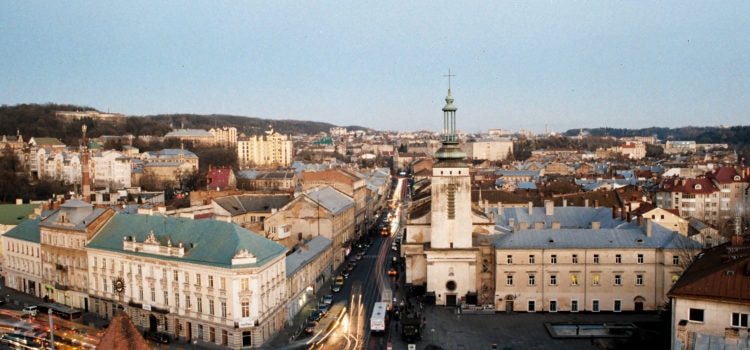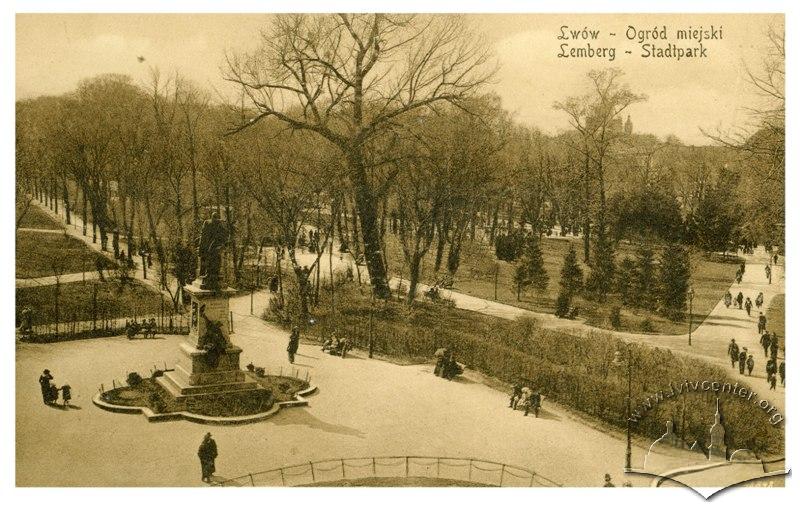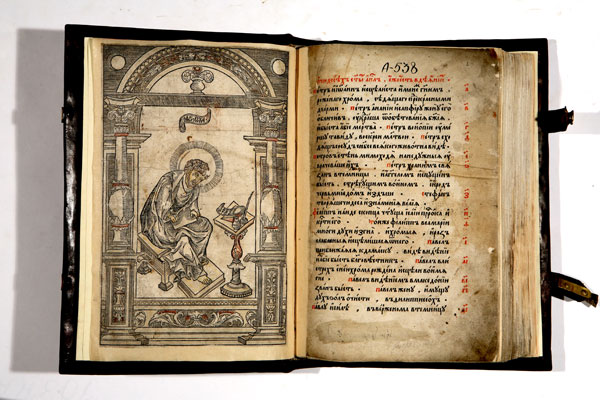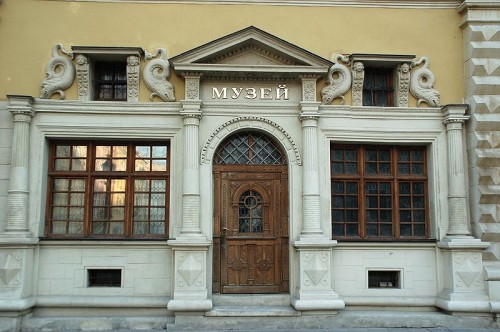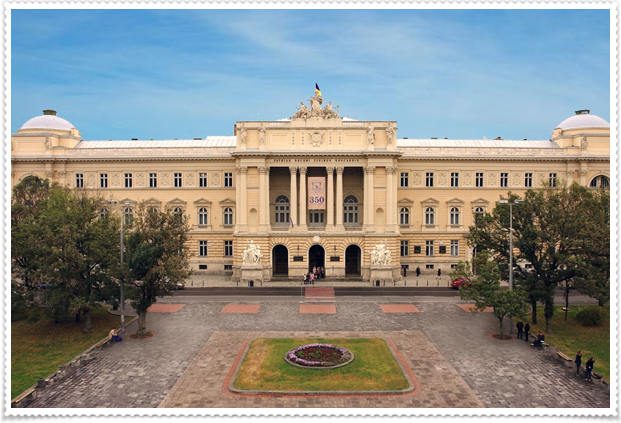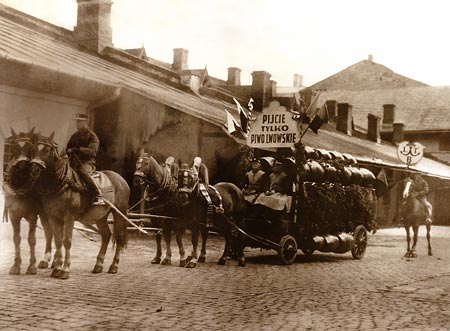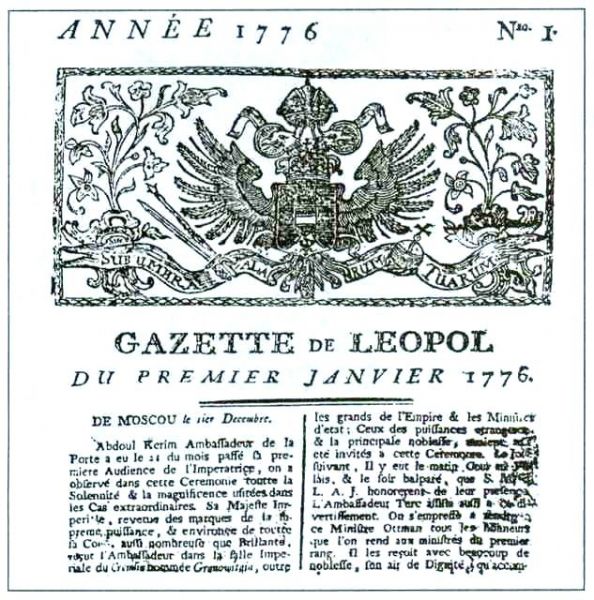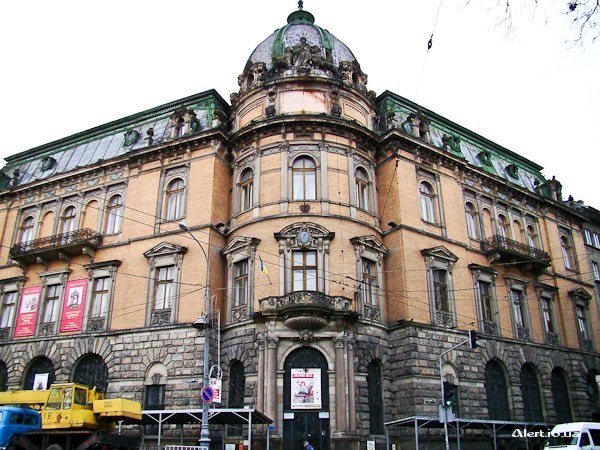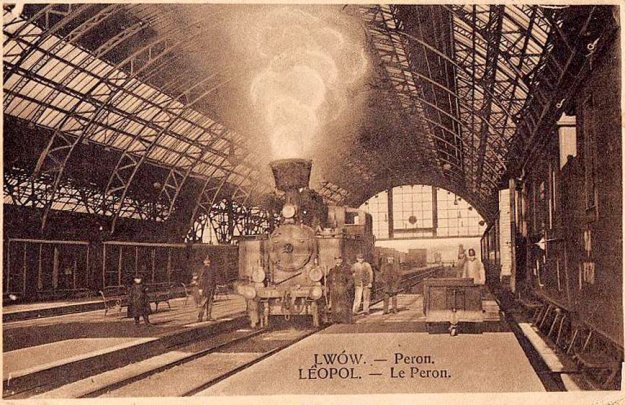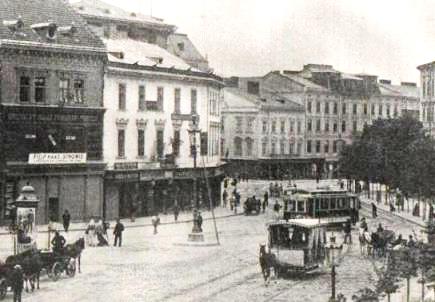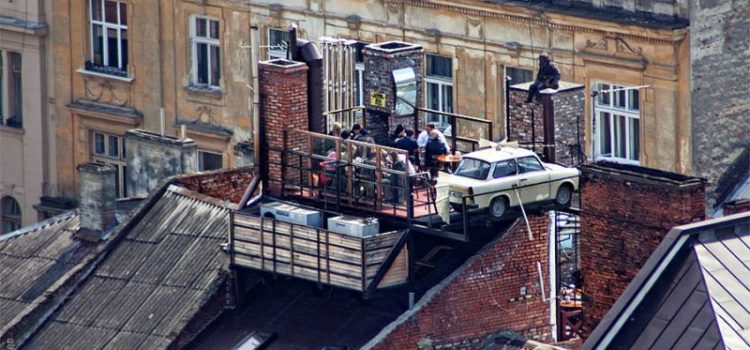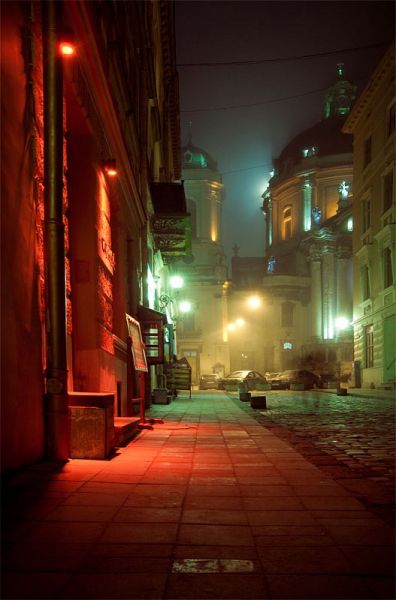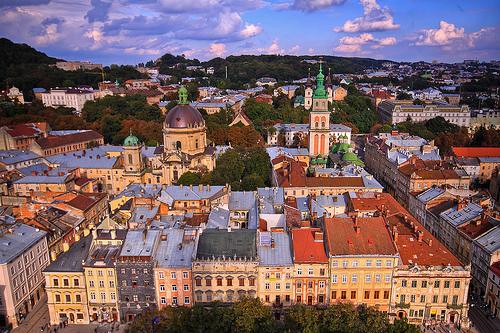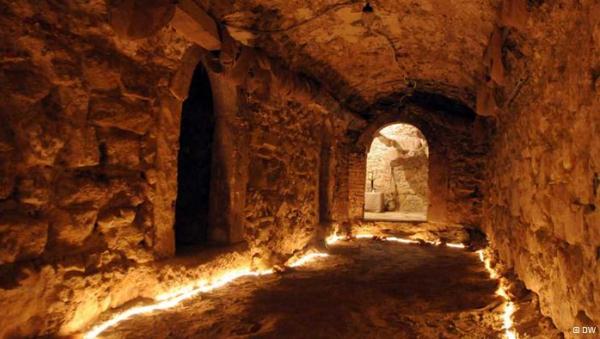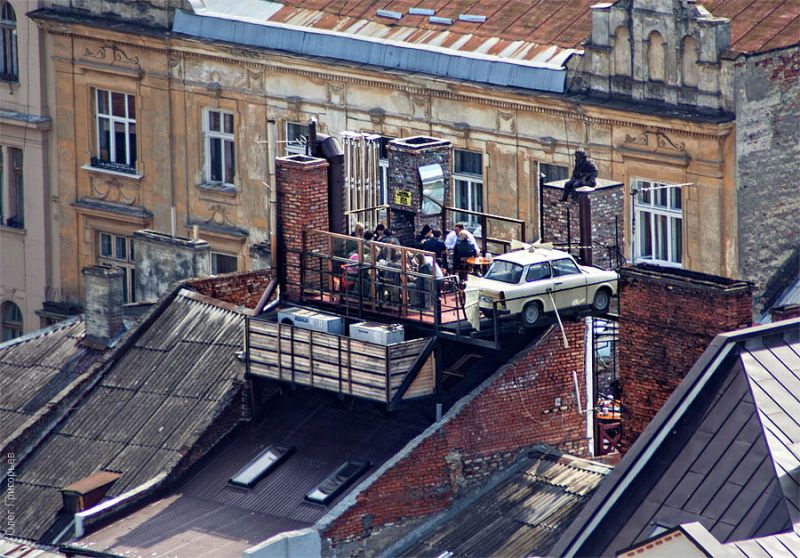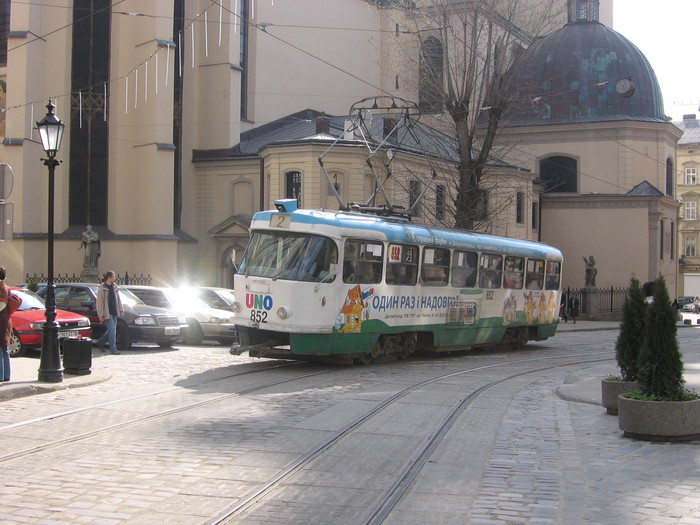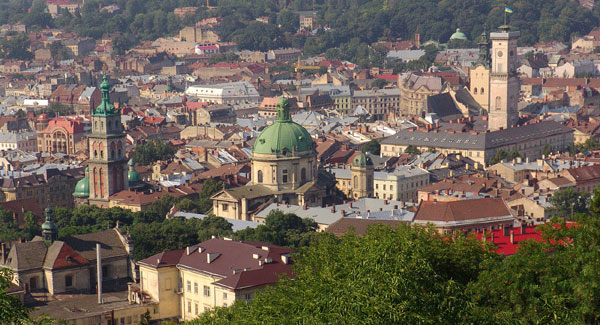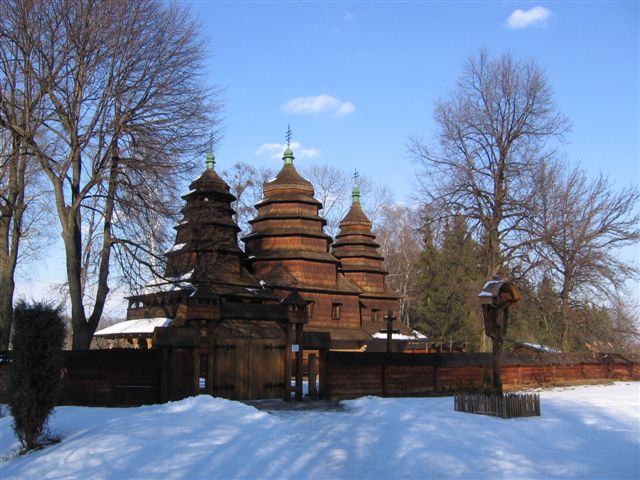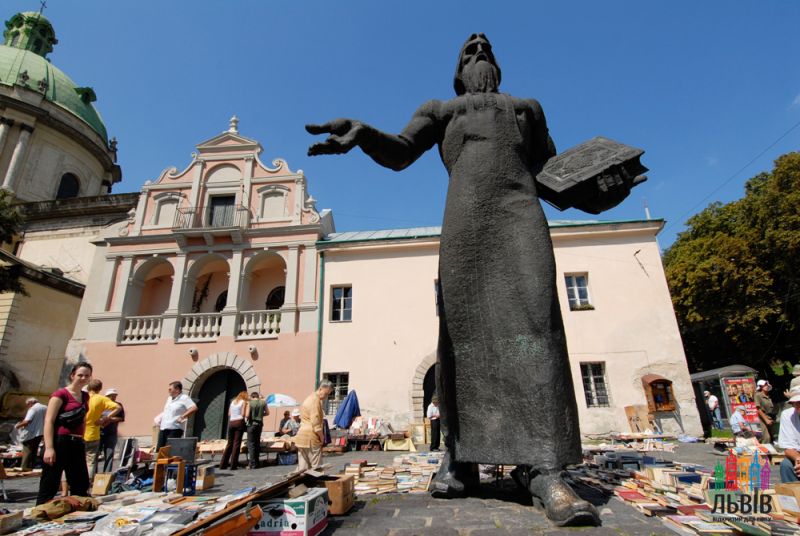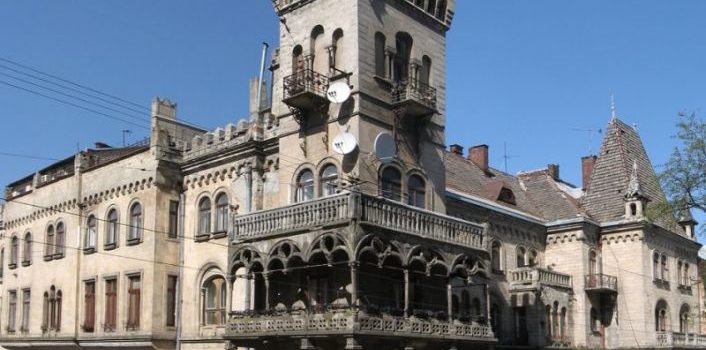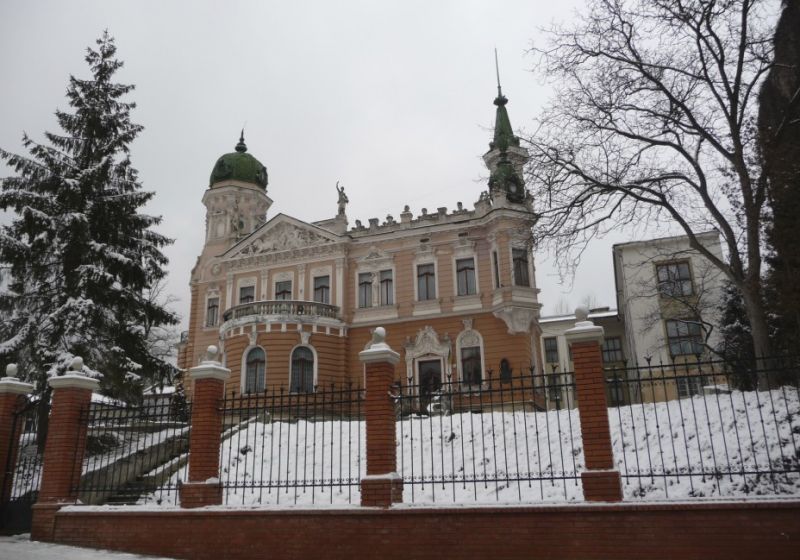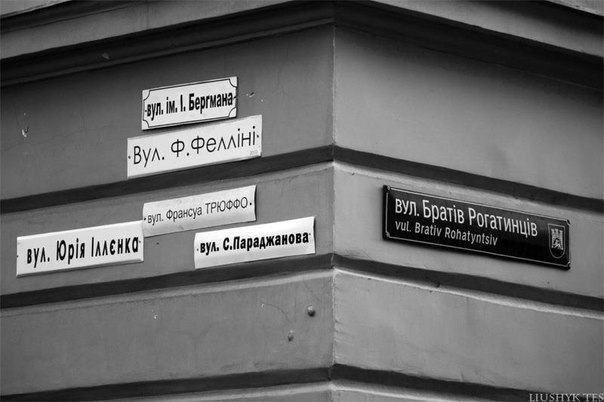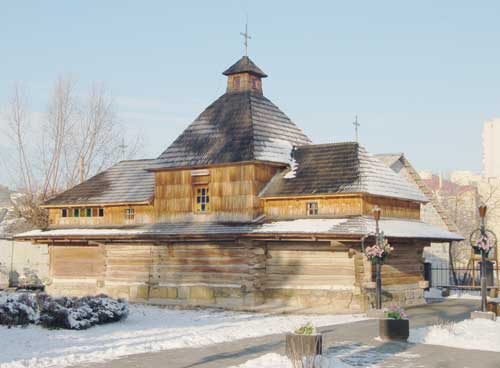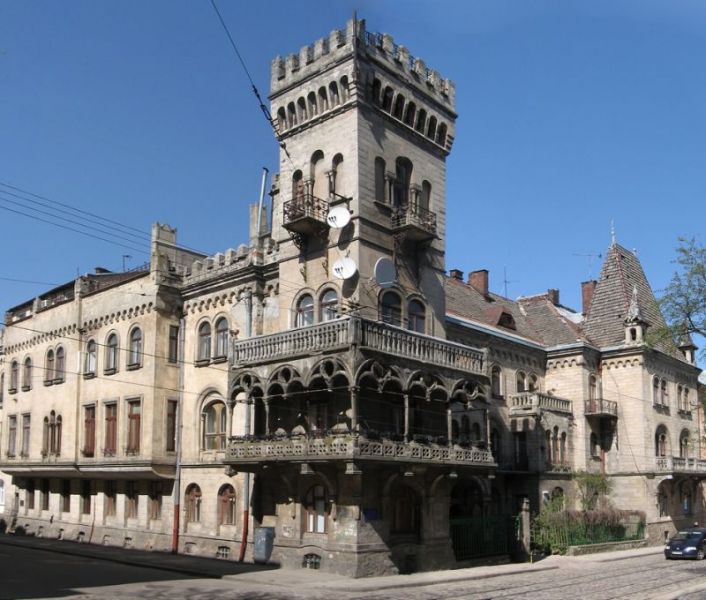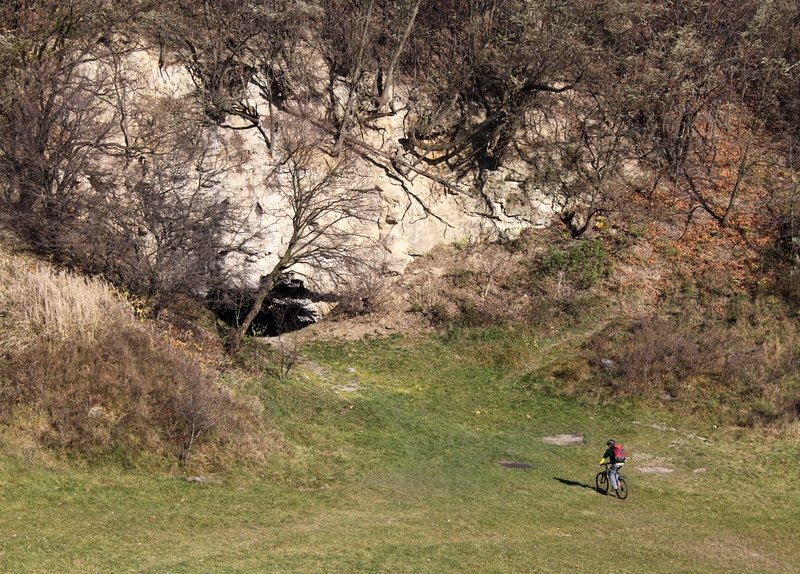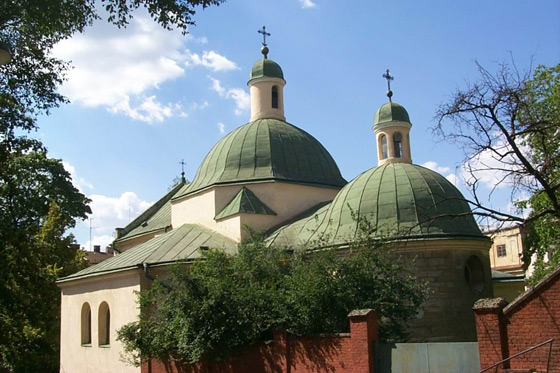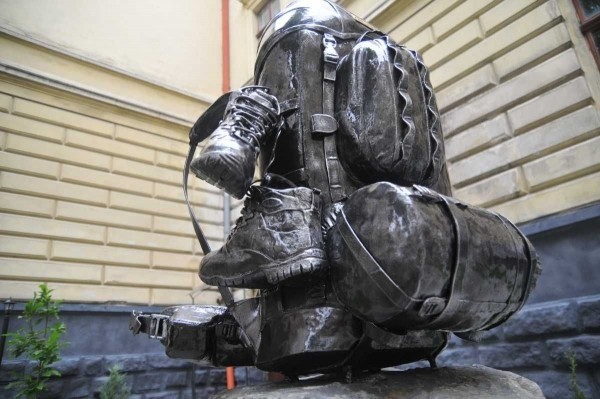First Time in Lviv
Lviv is the city which makes a traveler fall in love with it at the first sight. It fascinates one with its beauty of architecture, the warmth of people, and the feeling of a fabulous atmosphere on the narrow streets of the city. Lviv enchants and inspires travelers; many of them wonder why they have known so little about it. The city is unique and unmatched in its own way. During its 750-year history, Leopolis became famous not only in Ukraine but also all around the world for the inventions and events that took place there for the first time. The world’s first hot air balloon and kerosene lamp, the first reinforced bridge in Europe, Ukraine’s first book, post office, newspaper, railroad and much more owe their appearance to the glorious city of Lviv and its inhabitants. Thanks to this, people know, respect, and speak about this marvelous city. Would you like to know what else is so special about Lviv? Why the word “first” is mentioned so often in the context of its history? The answer to these questions you may find in the article First Time in Lviv.
1.In the second half of the XVI century, the oldest park in Ukraine – the Jesuit Garden (now, Ivan Franko Park) was established in Lviv. 400 years ago there were municipal fields in this place, but later the land passed into private hands. Having spent more than one and a half thousand zlotys (Polish national currency) on the park improvement, Jan Scholtz- Wolfowicz, the rich Lviv bourgeois, became the creator of this beautiful place. In 1855, the park passes into the ownership of the city, thus becoming one of the oldest municipal parks of Eastern Europe.
2.In 1574, Ivan Fedorov, Lviv bourgeois printer, published the first book in Ukraine – “The Acts and the Epistles of the Apostles” (“Apostle”). He managed to do it in his own printing house and at his own expense with the help of modest Lviv bourgeois. The first Ukrainian book was distinguished by the large format, the variety and the high level of artistic design and polygraphic execution. “Apostle” was printed in 1200 copies, which was quite a considerable number at that time. Today, there have remained around 100 copies of this edition in the largest libraries of Ukraine, Russia, Poland, Bulgaria, and the USA among others.
3. In the year 1629, Roberto Bandinelli, the Italian, established Ukraine’s first post office of the European model. Since then, the citizens of Lviv could send or receive letters once a week. To tell the truth, this service was quite expensive but despite it, people had to use it.
4. In 1661, the first university in Ukraine – the Jesuit Academy (now, Ivan Franko National University of Lviv) was established in the city. According to the Treaty of Hadiach (1658) signed between Ukraine and the Polish State (Rzeczpospolita), the Polish government promised to open two high schools-academies in Ukraine: one in Kyiv and the other one in any appropriate place for it. This place turned out to be in Lviv. On the 20 th of January, 1661, after numerous intercessions, the king Jan II Kazimierz signed the diploma in which he granted the Jesuit College “the worthiness of the academy and the title of the university” together with the right to teach all subjects available at that time as well as confer bachelor’s, licenate’s, master’s, and doctor’s degrees on graduates.
5. In 1715, Ukraine’s first brewery was established in Lviv. It was founded by the monks at the request of Count Stanislaw Potocki. Yet, in the middle of the XIX century, the brewery made the top three best beer factories of Austro-Hungarian Empire and became one of the biggest beer enterprises in the region. Since then the factory has been the symbol of Lviv. The brewery is called the face of the city and is worth representing Lviv at all stages of its development.
6. In 1749, a few editions of Ukraine’s first newspaper (“Kurier Lwowski”) were published in Lviv. Yet, in the year 1776, the first weekly newspaper “Gаzettede de Leopol” came out. The edition consisted of only four pages. However, at that time, it took about one week to publish the paper. Nowadays, it takes about one hour. The first edition of the newspaper was interesting only to intellectuals as it was written in French – the language which was spoken by the elites. Moreover, the news covered there was not interesting to ordinary people.
7. On the 4 th of March, 1784, the world’s first hot air balloon of the new model was launched in Lviv. It was a heated aerostat with an automatic fuel oil burner developed by Ignatsiy Martynovych, a professor of physics of Lviv University, and Nepomuk Herman, a doctor of medicine. The burner of Lviv inventors heated the air in the envelope as it was getting cold. This event took place only in nine months after the Montgolfier brothers launched the first flight of a hot-air balloon that used straw as fuel.
8. Around 1785, the entrepreneur Johann Preshel erected a three-story building in the place where currently there is a Museum of Ethnography on Svobody prospect. It was the first hotel in Lviv, as well as in Ukraine, which was called “Under the Roman Caesar”. Nowadays, the roof of this building is ornamented with the only in Ukraine sitting Statue of Liberty (the original name – the Thrift).
9. On March 30, 1853, the world’s first kerosene lamp was lit in Lviv pharmacy of Petro Mikolasz “Under the Golden Star”. Its inventors were Jan Zeh and Ignacy Lukasiewicz, the pharmacists. One of Boryslav (Lviv region) entrepreneurs, trying to get at least some benefit from the black oily liquid, transferred a barrel of raw petroleum to Lviv. He brought it to the pharmacy “Under the Golden Star” in the city center, having agreed with the pharmacists that they would find out the way to distil the oil into spirit for generous reward – that was his plan of getting rich. Luckily, instead of distilling spirit, the pharmacists suddenly invented the most rational method of petroleum cracking. Since then, kerosene had become the most frequently used means of lightning in the world. Even at the beginning of the XXI century, it is still used by one third of humanity.
10. On October 1861, the construction of the railway station was finished in Lviv. It was a standard spacious building, however, the press wrote about it with a notable enthusiasm, considering “the main terminal one of the best edifices in Europe”. The first passenger train arrived to Lviv from Przemysl on November 4, 1861 at 14:30. At all railyards in Medyka, Mostyska, Sudova Vyshnya, and Mshana the train was greeted by hundreds of locals; the arrival of the ‘iron horse’ was gladly met by musicians. This particular transport connection between Przemysl and Lviv became the first railroad in Ukraine.
11. The first public transport in Ukraine was established in Lviv on May 3, 1880. It was horse-drawn railway. The two functional lines (“Main Railway Station – Horodotska Street – Mytna Square” and “Main Railway Station – Pidzamche”) conveyed around 1 867 000 passengers yearly. In 1889, there were 105 horse-, 37 passenger-, and 3 freight-cars produced in Graz, Austria. The approximate velocity was 6.4 km per hour.
12. On August 1984, in a sports edition “A Guide to Gymnastics”, Xavier Fisher, the journalist, published the detailed report on the second gathering of the gymnastic community Sokil. There he described the course of football match between Sokil teams of Lviv and Krakow, which took place on Saturday, July 14, 1894 at 17:00 at Lviv Stadium. As it turned out later, the author described the first football match in Ukraine. The article reported that Lviv players wore grey athletic pants, white t-shirts, and sports shoes, while Krakow players wore blue pants, white t-shirts, and sports shoes. Lviv team won the game when Volodymyr Khomytskyi, the student of teacher’s high school, scored a goal to the northern gates on the 6 th minute of the match.
Top-9 What Should be Done in Lviv to Feel Its Atmosphere
1. Get lost.
One of the best ways to feel the atmosphere of the city is to get lost there. If you are uncertain of the road you do not know what to expect, and thus every new interesting thing is exciting. In the end, you will find the right way, however, the feeling of the unplanned dialogue with the city will remain for long.
2. See the Market Square.
Here one will find numerous unmatched stone buildings of various colors, each of which is unique and ultimate. Also, a lot of interesting sights, cafes, people, musicians and other weirdoes without which Lviv would not be Lviv.
3. Ascend the City Hall.
It is very exciting to look at the pride of Lviv and the UNESKO’s World Heritage objects from the top of Lviv City Hall, which towers 65 meters above the Market Square and is the highest in Ukraine.
4. Go to dungeons.
The underground Lviv is mysterious but exciting. According to the estimates, the total length of Lviv underground labyrinths is 100 kilometers. They extend under the Jesuit Church, the Dominican Church, and the Church of the Transfiguration (Preobrazhenska Church).
5. Have a Rest on One of Lviv Terraces and Visit One of Many Emotional Restaurants of the City.
Once you would like to have a cup of tea or aromatic coffee, Lviv will not leave you without emotions. There are many restaurants with terraces from which you can enjoy watching the picturesque roofs. One of them is “The House of Legends” the roof of which is decorated with a Soviet car, which adds special charm to the restaurant.
6. Have a trip in an old tram.
It is a must to see Lviv from the tram window. As the places change quickly, you will be able to see Lviv from different perspectives. Also, you can meet many flamboyant people there.
7. Ascent the High Castle and Walk in Znesinnya Park.
The highest top of Lviv also must be on your list as it enables you to observe the whole city, especially, the close center, majestic edifices, and the City Hall from its observation deck; at night all these sights are lightened. The walk in Znesinnya Park will bring you a lot of joy as it is a piece of nature in the heart of the city, which opens up beautiful views.
8. Visit Shevchenko Grove.
There are unmatched wooden houses, churches and other huts that represent different ethnic regions of Western Ukraine. Beautiful nature and landscapes of Shevchenko Grove add to the majesty of the place.
9. Buy a Rare Book at Ivan Fedorov Monument.
This is a place where one can buy valuable books in the open air. Besides, the dialogue with the sellers of old masterpieces may turn out to be very interesting to you.
8 Little-Known Places in Lviv
Lviv is an extremely interesting city full of masterpieces. However, some of them are not included on the traditional tour lists, staying away from the fabulous city center. If you decided to visit Lviv again, and reveal new sights, we offer to you a list of places which, despite their unpopularity, will make you fall in love with them.
1. Dunikovsky Palace
The real architectural masterpiece is Dunikovsky Palace, which was built in 1897-1898 at the request of Emil Dunikovsky. Today, it is a branch of the Lviv National Museum. It can be found on 42 Drahomanov Street.
2. A Multi-Named Street
Lviv is a festive city. Since 2006, “KinoLev” festival has been held here. Four years ago, the festival introduced an interesting and nonstandard tradition: annually, the name of a person who the festival is dedicated to has been added to the official name of Arkhivna Street. Today, except the official name, the street bears the names of Bergman, Truffaut, Illienko, and Parajanov.
3. The Wooden Church in Sykhiv
Not every resident of the biggest dormitory district in Lviv knows that a real masterpiece of sacred architecture – the Holy Trinity Church built in 17 th century is hidden in the center of an area covered by numerous panel buildings.
4. Jozef Sosnowski Palace
When walking along Chuprynka Street, one can feel like a hero from “Harry Potter” movie having looked at a mysterious palace built at the beginning of the XX century. It was projected by Jozef Sosnowski, the architect. Today, it is a dwelling building and a hostel.
5. Medova Pechera (Honeycave)
Apart from magnificent architecture, there are also many unique natural landmarks in Lviv. One of them is Medova Pechera that is situated on the Eastern part of the city suburbs in Mayorivka region. The estimated length of the cave paths is 56 meters. There are also bats living there.
6. St. Nickolas Church
The majority of traditional routes omit one of the oldest churches of Lviv. It witnessed the times when the city was founded. St Nickolas Church, which can be found on 28 Khmelnytskyi Street, is a must-see for every tourist
7. A Monument to a Backpack
It is probably one of the most nonstandard monuments in Ukraine. A backpack is a really important thing for everyone as it makes the tourist’s life easier keeping all necessary goods in one place. The symbol of a backpack has been uniting people of different generations and nationalities. The monument was erected on the patio of the geographic faculty of Ivan Franko National University of Lviv at the address 41 Doroshenko Street.
8. The Underground Lviv
By estimate, the total length of Lviv underground labyrinths makes almost 100 kilometers. They go through the collector of Poltva River, the basements of Market Square buildings, and the dungeons of the monasteries. The most famous of them, which are open to visitors, are the basements of the Jesuit Church, the Pharmacy Museum, and the former Dominican Monastery. The widest dungeons in Lviv are under the Church of the Transfiguration (Preobrazhenska Church).


